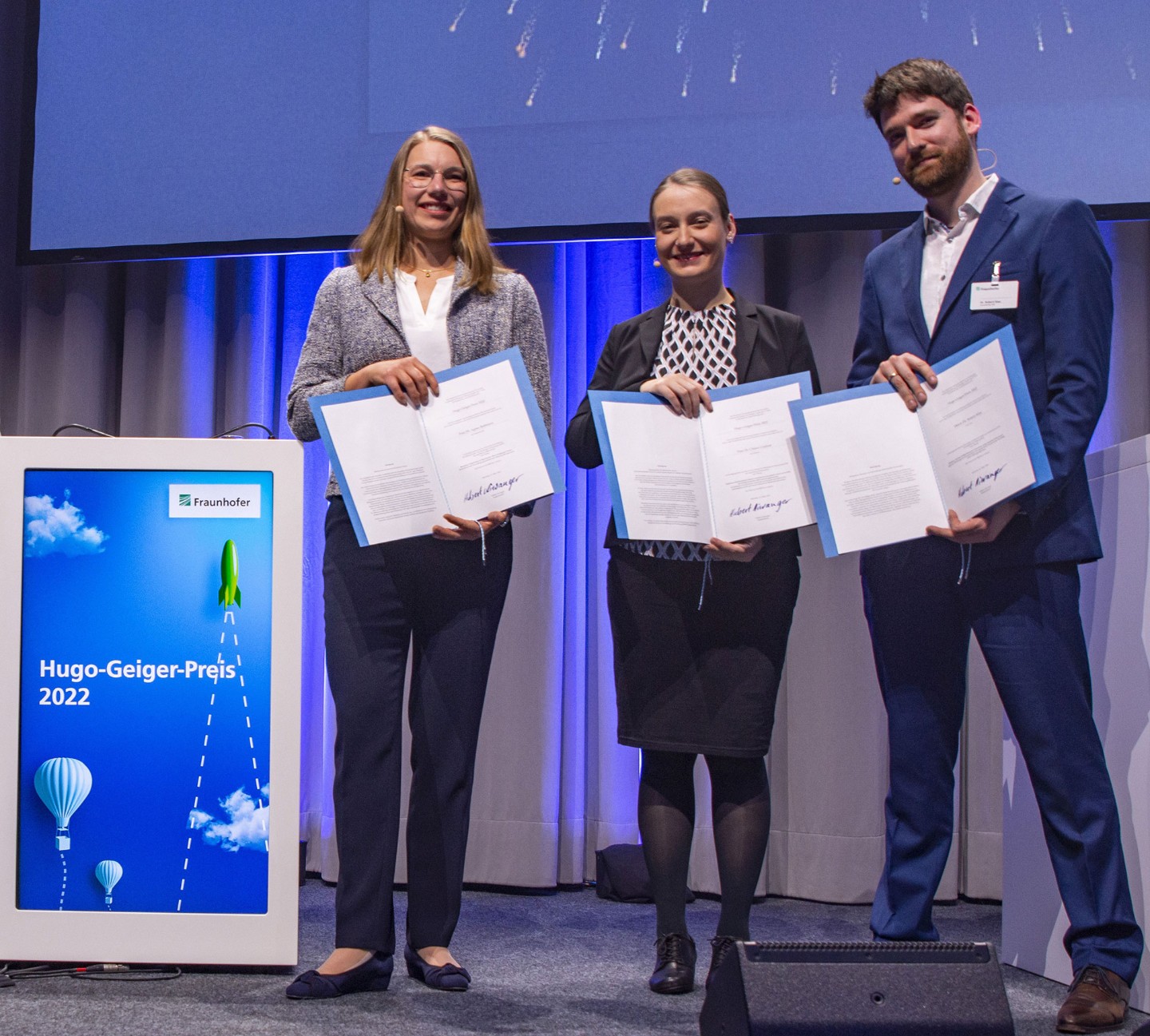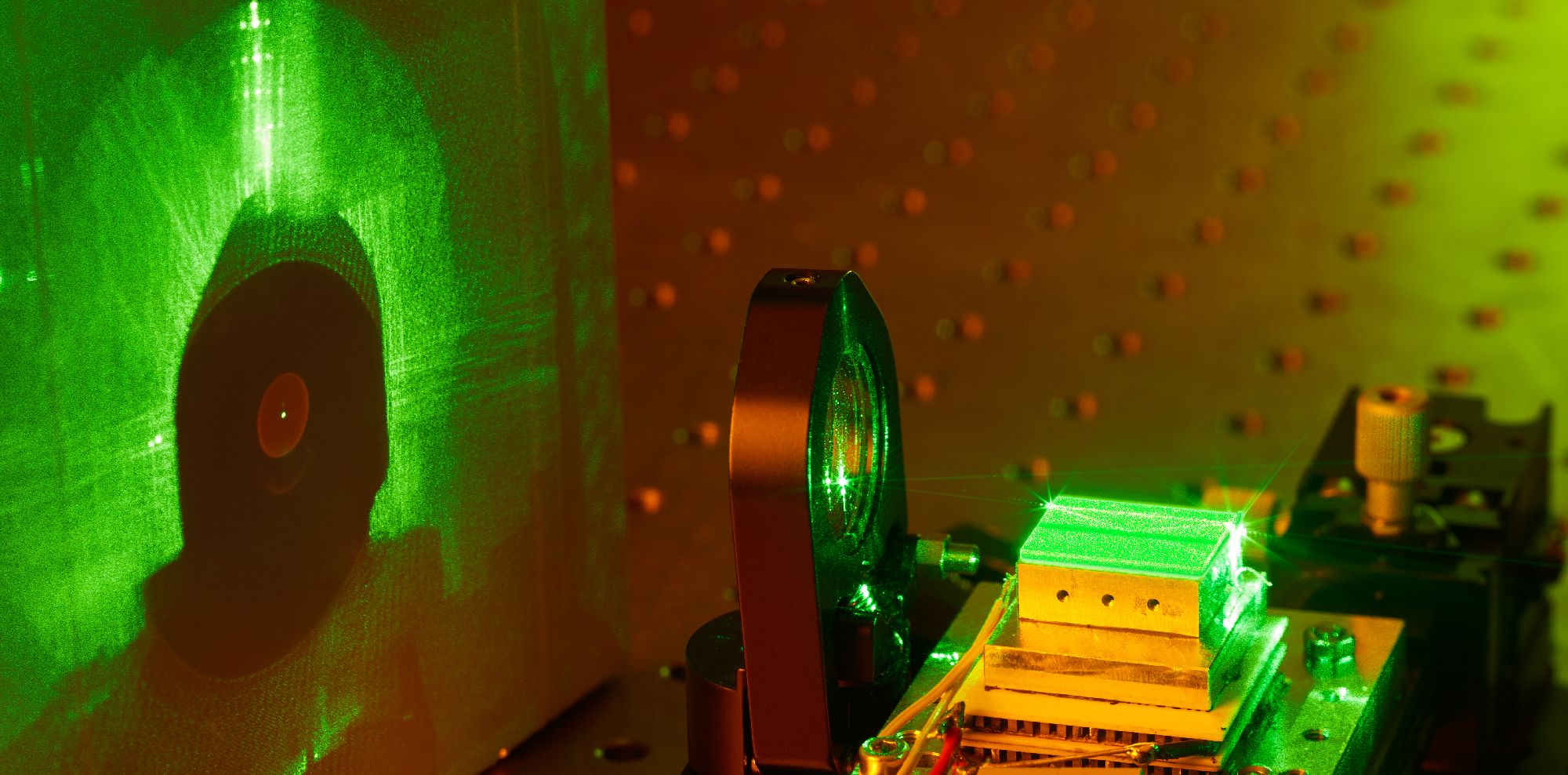Hugo Geiger Prize for Dr. Chiara Lindner
Quantum sensor technology opens up new possibilities for infrared spectroscopy
A combination of Fourier transform analysis and quantum effect allows the spectral properties of different substances to be detected quickly and precisely. In her dissertation conducted with the Fraunhofer Institute for Physical Measurement Techniques IPM, Dr. Chiara Lindner developed a quantum Fourier transform spectrometer that can do just that – with just one millionth of the light intensity of standard spectrometers. For her work, she was awarded the Hugo Geiger Prize that honors outstanding doctoral theses in the field of ap-plied research.


Fourier transform infrared spectrometers are used in environmental analysis, pharmaceuticals, material testing and emissions tests. FTIR spectrometers detect a variety of molecules based on their characteristic transmission spectrum. This makes it possible to analyze the exact composition of gases or plastics, for example. Until now, one of the limiting factors of these devices was their slow and expensive infrared detectors.
Silicon instead of infrared detectors: faster, cheaper and with less noise
In her dissertation Dr. Chiara Lindner combined the established process with the new field of quantum sensor technology. This allowed her to use entangled pairs of infrared and visible photons to replace the technologically complex infrared detectors, which were of limited quality, with significantly faster, cheaper and low-noise silicon detectors. While the infrared photon interacts directly with the sample, only the visible partner photon is detected. This is where the quantum element comes in: With photons that are so closely correlated, there can only ever be interference for both infrared and visible photons, or for neither of them. If the infrared photon is therefore absorbed by the sample, the interference disappears for the visible photon too. This literally moves the information from the invisible infrared spectrum to the (visible) light.
The combination of Fourier transform analysis and quantum effect allows the spectral properties of different substances to be detected quickly and precisely – with just one millionth of the light intensity of standard spectrometers. This makes the process particularly well suited to biological samples. “In my doctoral thesis, the quantum Fourier transform spectrometer has managed to achieve the gold standard of classic Fourier transform spectrometers in a number of specifications,” said Chiara Lindner. She also received the Quantum Future Award from the German Federal Ministry of Education and Research (BMBF) in recognition of her work.
Other prize winners
Dr. Agnes Bußman in cooperation with the Fraunhofer Institute for Electronic Microsystems and Solid State Technologies EMFT (first prize) and Dr. Robert Klas in cooperation with Fraunhofer Institute for Applied Optics and Precision Engineering IOF (third prize).
The Hugo Geiger Prize On March 26, 1949, the inaugural meeting of the Fraunhofer-Gesellschaft took place under the patronage of State Secretary Hugo Geiger from the Bavarian Ministry of Economic Affairs, as it was then. On the occasion of the 50th anniversary of the Fraunhofer-Gesellschaft, the Bavarian Ministry of Economic Affairs and Media, Energy and Technology launched the Hugo Geiger Prize for the next generation of scientists. Awarded each year to three young researchers, the prize honors outstanding doctoral theses in the field of applied research that have been completed in close collaboration with a Fraunhofer-Gesellschaft institute. The individual prizes amount to 5,000, 3,000 and 2,000 euros. The submissions are assessed by an expert panel of judges made up of representatives from the worlds of research, development and industry. The assessment criteria are scientific quality, relevance to industry, originality and use of interdisciplinary methods. |